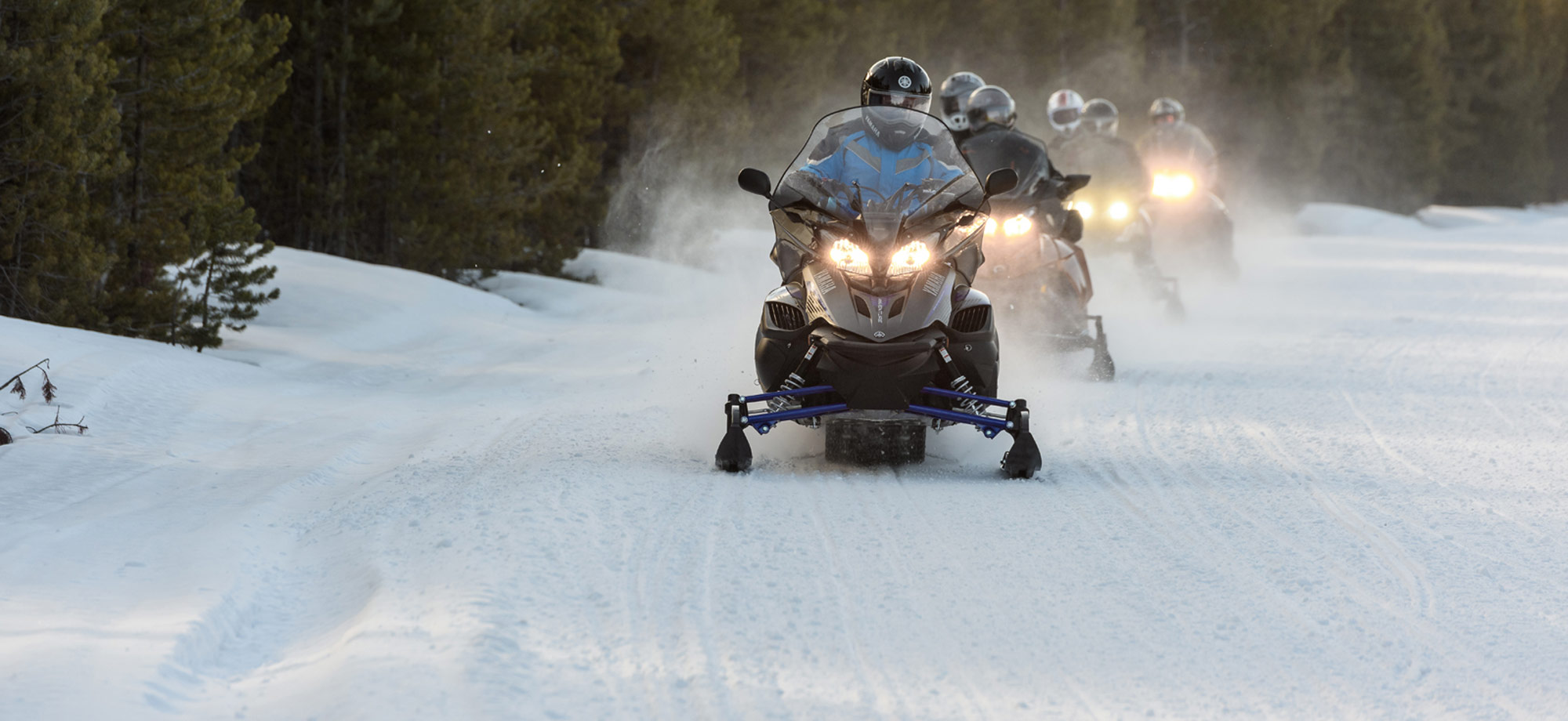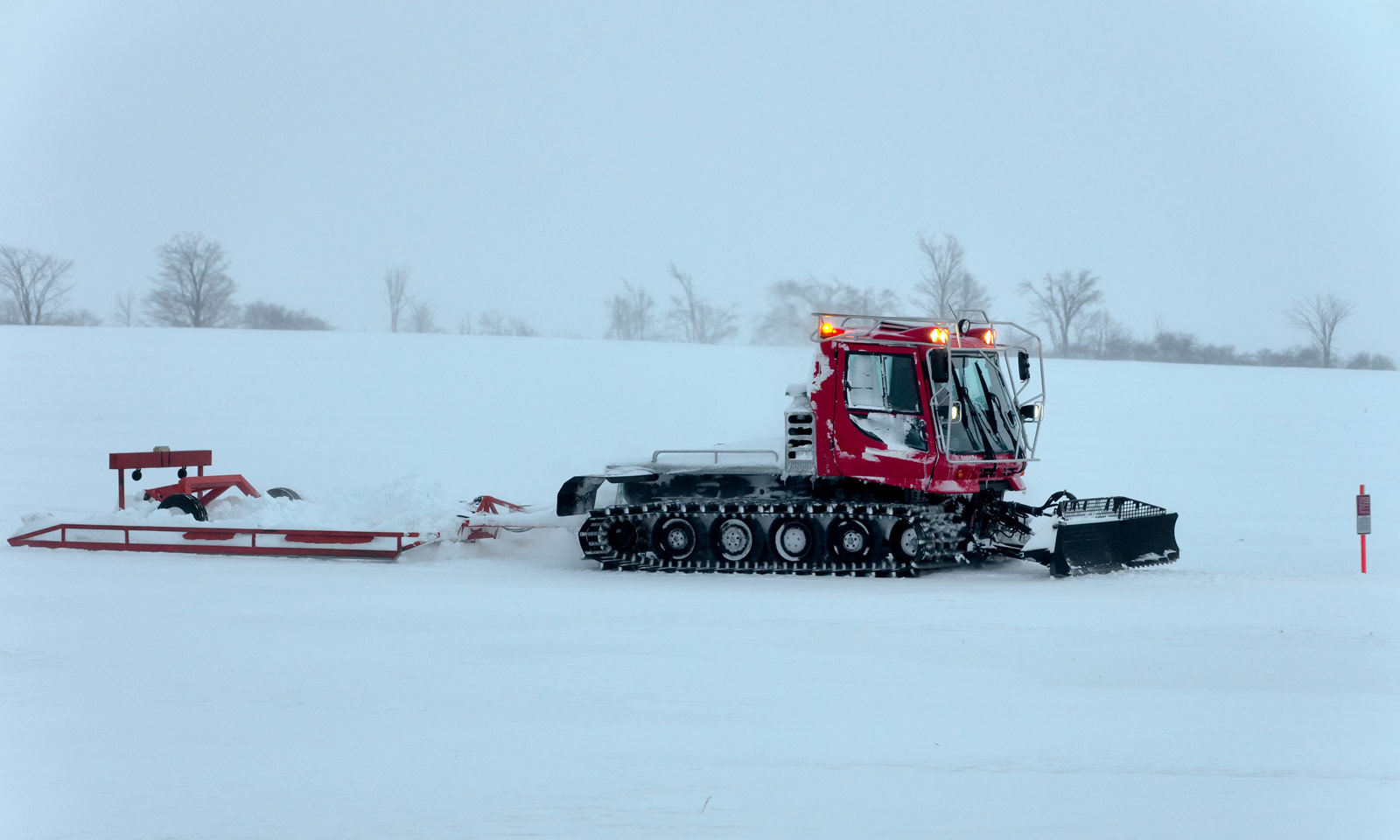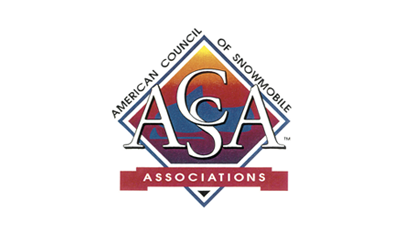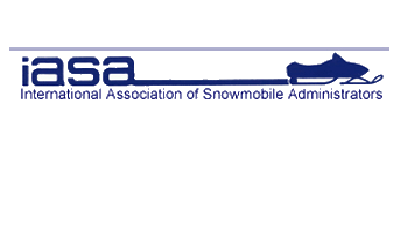Etiquette for Encountering Trail Grooming Equipment
It is important to respect the work trail groomers do to smooth and restore snowmobile trails to a good condition for a more pleasurable riding experience. Recognize that groomers may be working on the trail at any time. Always keep your snowmobile under control and anticipate that a groomer could be around the next corner or over the hill—and they are a large, immovable object that will win should you collide.
Click the curriculum tab to begin this course section.
Etiquette for Encountering Trail Grooming Equipment
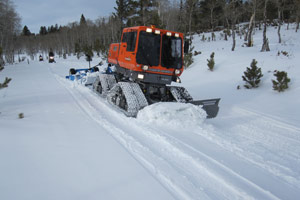
When approaching an oncoming groomer on the trail, slow down and move your snowmobile to the far right side of the trail. Realize that the grooming drag or tiller behind the grooming tractor is very wide, may extend wider than the tracks of the tractor, and may take up most or all of the trail's width. If the trail is narrow or winding, you may need to stop at the far outside edge of the trail, or even off it, to allow the groomer to pass.
When overtaking a groomer from the rear, slow down and assess the situation ahead. If there is good sight distance and the trail ahead is clear of oncoming traffic, pass the groomer while operating with caution. Beware that the groomer may create snow dust and make visibility poor as you pass it. If the trail is narrow or winding, you may need to stay behind the groomer until the operator pulls over and signals for you to pass. Be patient since it may take quite a bit of time before there is a good location with sufficient room for you to safely pass.
If you need to stop a groomer to ask the operator for information or assistance, understand this should be done only in an area where there is good sight distance and is safe for it to stop. The groomer operator may instruct you to follow the groomer to a safer location where he can safely stop to provide the assistance you need.
Trail Quality and Set Up Time
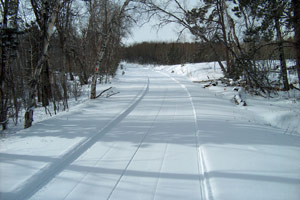
Snowmobile trail grooming requires a 'set up' time whereby the freshly groomed trail can re-freeze. Therefore riders must understand that riding on freshly groomed trails during this essential set up time can quickly destroy the trail base, resulting in long-term rough trails. Set up time will vary depending upon temperature and moisture content of the snow. Generally, at least two to six or even more than ten hours may be needed for the freshly groomed trail to set up to where it is durable and can withstand heavy snowmobile traffic.
Respect the work trail groomer operators do by never following directly behind their grooming equipment, since it immediately destroys their work. If possible, try to avoid riding a snowmobile on freshly groomed trails for at least two hours after the groomer passes by either waiting or choosing an alternate route. Showing this respect can help improve the quality and durability, as well as the safety, of your snowmobile trails.
If you come upon a groomer working on the trails and absolutely must use that route, try to minimize your impacts by observing the following groomer etiquette:
- Slow down!
- Try to stay off the fresh grooming if the trail or adjacent area is wide enough to safely and legally do so
- Operate only at the far outside edge of the fresh grooming if your only option is to ride upon the newly groomed trail
- Keep your group in single file versus allowing everyone to take a different path on the fresh grooming
- Don't be purposely disrespectful (and damaging) by intentionally fishtailing or powering through the soft snow
